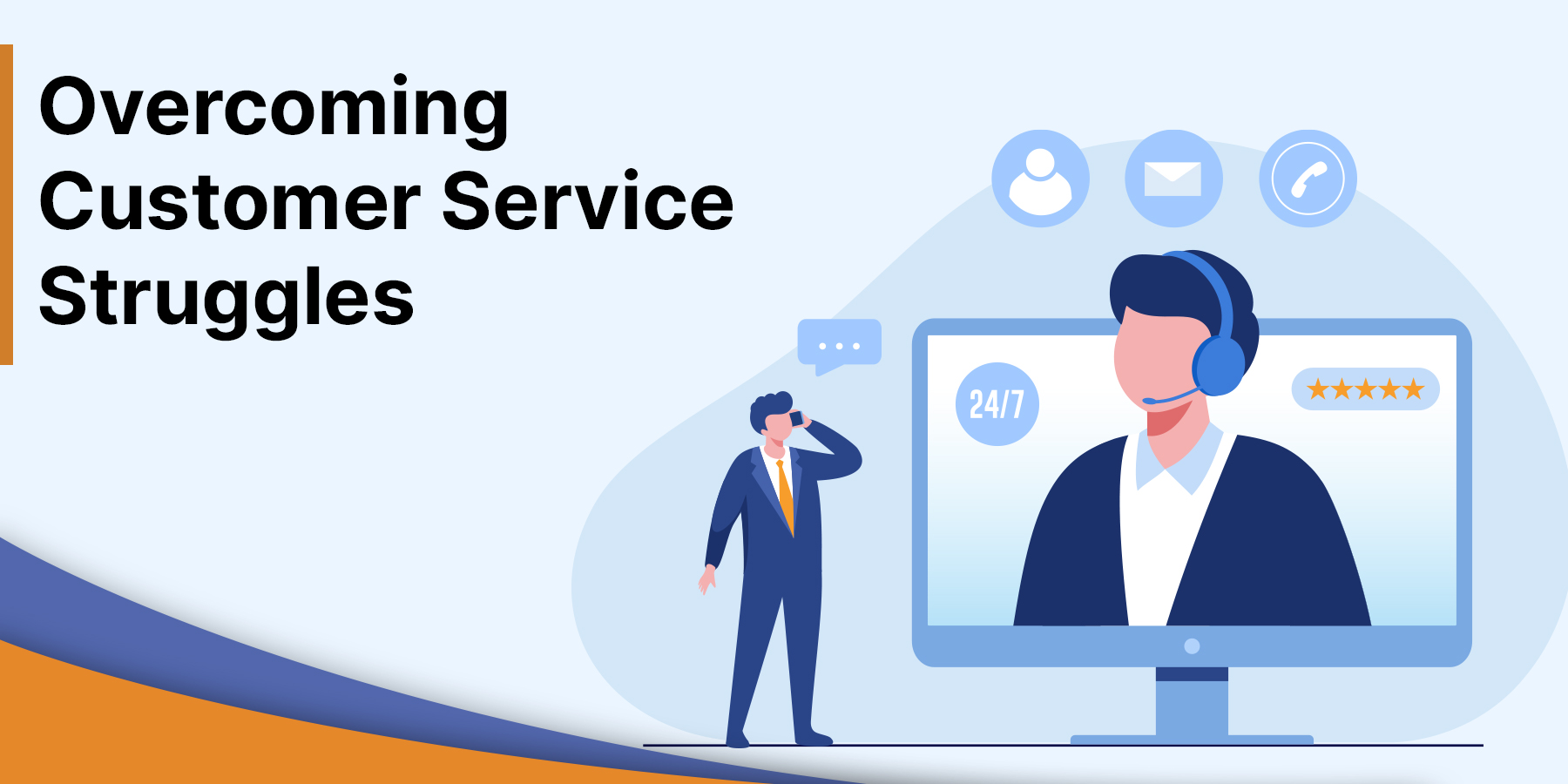
The eCommerce business is constantly growing. Retail eCommerce sales in 2019 hit US$3.5 trillion globally, a 165% increase since 2014, demonstrating how much technology has altered commercial activity. These improvements have created hundreds of chances for prospective entrepreneurs, thanks to the introduction of digital platforms.
If you want to establish a business today, having a solid internet presence is a terrific approach to secure your success. However, as more companies go digital, you must seek ways to differentiate yourself from the competition. One definite way is to deliver excellent eCommerce customer service.
Brands that can efficiently address concerns acquire pleased and satisfied customers, increasing loyalty and helping to strengthen your market reputation. However, offering excellent eCommerce customer service is not without its challenges.
To get started, let’s look at five common eCommerce customer support difficulties and how to solve them.
5 Common Challenges in Ecommerce Customer Support
Customers today are picky about the eCommerce customer support experience they receive from a business. Besides purchasing your products and services, customers pay special attention to how you respond to their problems. Ineffectively managing their inquiries might harm your reputation and prevent you from growing your firm.
You must be aware of the common issues in eCommerce customer support to guarantee that your consumers have a positive experience when doing business with you.
International Clientele Are Catered To
If your company serves consumers from other countries, language problems can make it challenging for your support crew. While hiring multilingual support workers is recommended, it is not always the most practical solution, especially if your firm is on a restricted budget. Translation tools are your best bet in this situation.
Providing automated translation tools to your team will lessen your dependency on bilingual people and allow you to support a broad consumer base. If your company services many consumers in a specific location, consider employing an expert to handle complex difficulties.
Putting an Omnichannel Strategy in Place
The integration of numerous channels to better business-client contact is an omnichannel strategy. This strategy allows you to give a complete and seamless experience by merging their experiences with your physical store, online, and other digital platforms. Being present on several channels, however, is insufficient.
Because monitoring email, social media, and live chat simultaneously can be time-consuming and inefficient, it’s preferable to invest in a system that integrates all of these channels, such as CRM software, which includes various features to help your staff keep organized and productive.
It will be easy to track each platform and develop the necessary tactics once you’ve identified the primary channels you want to focus on.
Improving the Customer Support Process
Not only should your eCommerce customer service personnel strive for continuous improvement, but so should your entire company. Unfortunately, many firms become careless in their support process, resulting in poorer customer satisfaction and a detrimental impact on the bottom line.
Getting feedback regularly will allow you to keep things in check. Send out surveys following interactions to see how well your support team is doing so you may make modifications as needed. While reading or hearing criticism can be painful, gaining knowledge will help you improve your business.
Taking Care of Customer Inquiries
It’s safe to argue that less is more when dealing with client problems. According to research, internal support teams receive an average of 492 tickets, equating to more than a hundred tickets per week. If your team cannot handle such a high volume of inquiries, it will eventually result in support overload, dissatisfied customers, and lost conversion possibilities.
Customers want immediate responses. Implementing self-service options would be a simple solution to this difficulty. Rather than paying extra people, creating a FAQ page or designing a chatbot to handle simple issues will be a more effective and cost-effective alternative. It minimizes the total workload of your staff and has a significant impact on the customer experience.
Tracking Order Status
When offering eCommerce customer support, having a complete image of your customer is critical. Will you be able to look up the record in your system and respond quickly if a customer writes to you about the status of their order?
Instead of spending ages to manually piece data, investing in eCommerce customer support will work wonders for your workflow. Your eCommerce customer support team will be able to provide timely service to your customers with an integrated view of their previous transactions, order information, and delivery status.
Difficult Customer Experience Scenarios
The Impatient Customer
The situation: An irritated customer may have been waiting in line for longer than usual, be late for their next appointment, or be restless as you look for a solution to their problem or concern.
How to address it:
- Be direct and to the point without dismissing their demeanor.
- Explain the reason for the wait or delay without getting into specifics.
- Assure an impatient consumer that you are working hard to resolve the situation.
Frame your responses positively as well. Instead of declaring an item is out of stock, explain that a new shipment is expected by a specified date or that you are working fast to resupply the goods in issue.
The Indecisive Customer
The situation: An indecisive customer has difficulty deciding between various product or service options, but they may not express this worry to you.
How to address it: Ask specific questions about some of the most typical decision-making variables, such as features, service tiers, and price. If you have any literature to help, they make a decision, direct them to it. Most crucial, carefully listen to their concerns.
The Irate Customer
The problem: Regardless of the scenario or remedy, an angry client is just dissatisfied with the result, and attempts to correct the situation are either ineffective or worsen.
How to tackle it: Even if you don’t think it’s necessary, start the conversation by apologizing for the problem. Try to resolve the situation by addressing their specific grievances about the topic.
Remember to keep it brief: the longer you stay, the more chances for complaints arise, and the less time you spend with your other customers.
Outsource Ecommerce Customer Support Today!
The market’s steady shift toward the digital sphere opens up many chances for aspiring entrepreneurs. With eCommerce sales constantly increasing over the years, more businesses are expected to be present online. This ultimately means that you’ll be dealing with more competition in the future.
Customer loyalty is crucial in a highly competitive business. Your products and services may excite your customers, but providing exceptional assistance is the most effective approach to earning their trust. Knowing the most prevalent challenges in eCommerce customer support will make it easier for your team to develop a successful support strategy.
With Vserve’s customer support service, we can ensure that you are available to assist your customers throughout their purchasing journey and provide an outstanding experience. Allow Vserve to respond swiftly and efficiently to your technical or non-technical inquiries. Our services can help you increase the value of your brand, improve customer satisfaction, and boost brand loyalty.








